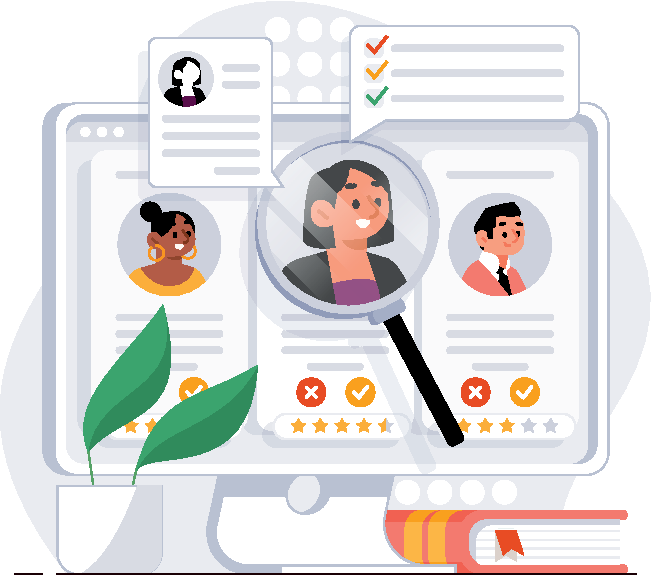Hiring the right people isn’t just about filling roles — it’s about building the foundation of your culture and future success. Yet for many HR leaders and small to mid-sized businesses (SMBs), the hiring process is often outdated, overly complex, or misaligned with what today’s candidates value most.
In a competitive talent market, an optimized hiring process isn’t just efficient — it’s a strategic advantage. From creating meaningful candidate experiences to integrating technology that reduces bias and increases speed, HR leaders can design a recruitment journey that attracts top performers while reinforcing their company’s employer brand.
This guide explores how HR teams can modernize their hiring process, reduce time-to-fill, and make every candidate interaction reflect their company’s values — all while improving the quality of every hire.
Why Modern Hiring Matters More Than Ever
Hiring is no longer a one-way transaction. Candidates today expect transparency, personalization, and a sense of purpose from the very first interaction. The companies that get it right don’t just fill roles faster — they build stronger teams, improve retention, and elevate their brand as an employer of choice.
According to LinkedIn’s Global Talent Trends Report, companies with a strong candidate experience see a 70% improvement in the quality of their hires. In other words, how you hire is as important as who you hire.
For HR leaders, optimizing the hiring process offers several benefits:
- Higher quality of hires: Better alignment between role expectations and candidate capabilities.
- Faster time-to-hire: Streamlined workflows reduce delays and keep top candidates engaged.
- Improved employer brand: Positive candidate experiences translate into stronger reputation and referrals.
- Reduced turnover: Employees who feel valued from the start are more likely to stay long-term.
Step 1: Start with Clarity — Craft Job Descriptions That Connect
The hiring process begins long before the interview. It starts with your job posting.
Too often, job descriptions focus on company needs rather than employee value. To stand out, shift your approach — show candidates not just what the role entails, but why it matters and how they’ll make an impact.
A great job description includes:
- Clarity: Clear responsibilities, required skills, and growth opportunities.
- Authenticity: Reflect your company’s values and culture.
- Inclusion: Use language that welcomes diverse candidates and avoids bias.
- Benefits that resonate: Highlight flexibility, development, and lifestyle benefits — not just compensation.
When job postings speak directly to what employees care about — purpose, growth, and balance — you’ll attract people who align with your mission, not just the paycheck.
Step 2: Use Technology to Streamline, Not Replace, the Human Touch
Technology can be your greatest ally in hiring — if used strategically.
Tools like Applicant Tracking Systems (ATS) and AI-driven screening platforms can reduce administrative work, ensure compliance, and keep candidates from slipping through the cracks.
However, the goal isn’t automation for automation’s sake. It’s to free HR teams from repetitive tasks so they can focus on what matters most: connection.
Here’s how technology can elevate your process:
- AI-powered screening: Identify top candidates faster and minimize bias.
- Automation: Handle scheduling, reminders, and follow-ups seamlessly.
- Analytics: Track time-to-hire, cost-per-hire, and conversion rates to uncover bottlenecks.
- Candidate experience tools: Use chatbots, video interviews, and personalized updates to improve engagement.
The best hiring experiences combine digital efficiency with genuine human warmth.
Step 3: Build a Candidate Experience That Reflects Your Culture
Today’s top talent expects an experience that feels as modern and human as the workplace they’re joining.
That starts with communication. Candidates should always know where they stand in the process, what comes next, and when they can expect feedback. Transparency not only builds trust but also strengthens your reputation — even among those you don’t hire.
To create a candidate experience that sets you apart:
- Keep it personal: Address candidates by name and reference their unique skills.
- Be responsive: Quick follow-ups show respect and professionalism.
- Offer feedback: Even a brief, thoughtful note can turn a rejection into a positive experience.
- Showcase your culture: Use your careers page, social media, and interviews to give candidates a real sense of life inside your organization.
When done right, the hiring process becomes a preview of what it’s like to work at your company — collaborative, transparent, and people-first.
Step 4: Implement Structured, Fair, and Inclusive Interviews
Bias and inconsistency can derail even the best hiring intentions. Structured interviews — where each candidate is asked the same set of core questions — ensure fairness and improve hiring accuracy.
Combine structured interviews with skill-based assessments to evaluate real-world abilities, not just interview performance. Encourage interview panels to reflect the diversity you want to attract, and train managers on inclusive interviewing techniques.
Pro Tip: Include questions that explore cultural alignment and values — not just technical competency. After all, the best hires are those who grow with your culture, not against it.
Step 5: Recognize and Retain Talent from the Start
The hiring process doesn’t end with a signed offer letter. The onboarding experience is where engagement truly begins.
First impressions set the tone for how new hires feel about your organization. A structured onboarding process that blends role training, relationship building, and personalized support can dramatically improve retention.
Platforms like LIVD make it easy for HR leaders to extend that care beyond day one. By offering personalized lifestyle benefits — such as flexible wellness, travel, or household perks — companies show employees that they’re valued as individuals, not just team members.
When recognition and personalization begin early, loyalty follows.
Step 6: Continuously Refine and Measure
Just like any HR initiative, your hiring process should evolve based on data and feedback.
Track key metrics such as:
- Time-to-hire: How long it takes to fill roles.
- Quality-of-hire: Performance and retention rates of new employees.
- Candidate satisfaction: Post-interview surveys or feedback loops.
- Diversity metrics: Representation across applicant and hire stages.
The best HR teams treat hiring as a living process — one that’s constantly improving to meet the needs of both the business and the modern workforce.
The Future of Hiring Is Personal, Purpose-Driven, and People-First
As the workforce continues to evolve, HR leaders have an opportunity to transform hiring from a transactional process into a human experience that builds connection and trust from the very first touchpoint.
By leveraging technology strategically, creating authentic experiences, and offering benefits that reflect employees’ lifestyles and values, companies can attract and retain the kind of talent that drives long-term success.
Because in today’s competitive market, great hiring isn’t just about finding talent — it’s about showing talent why they should find you.

